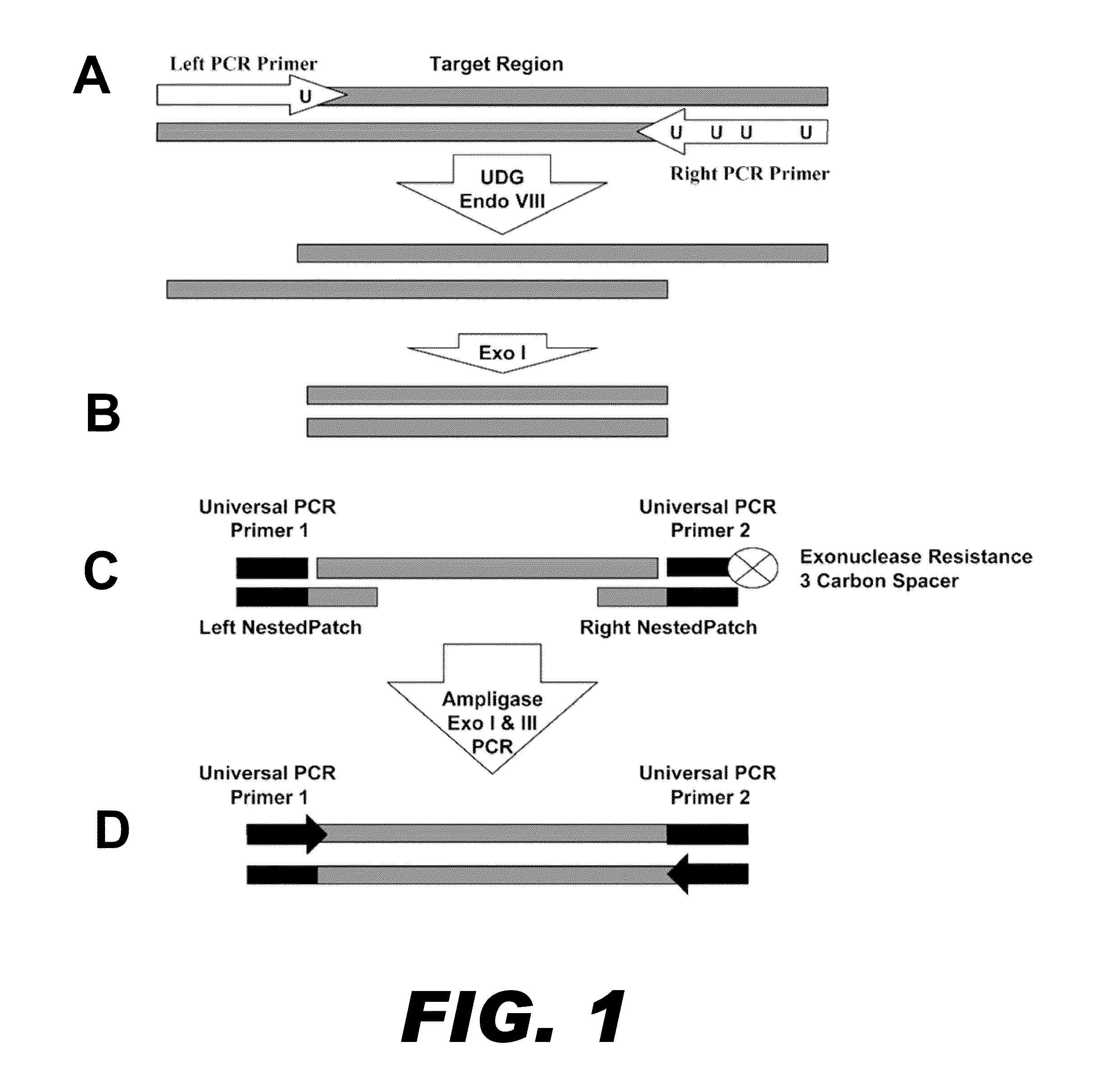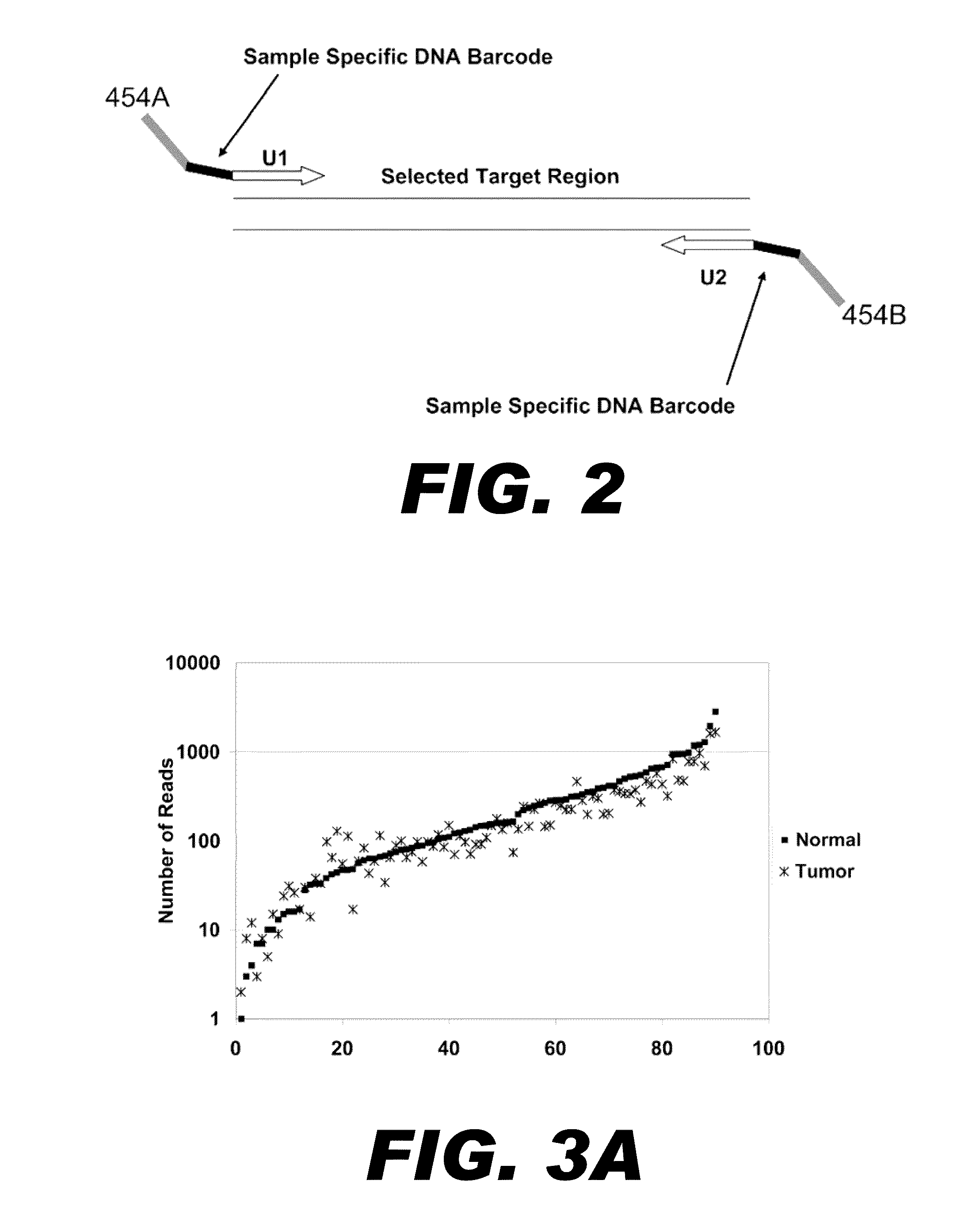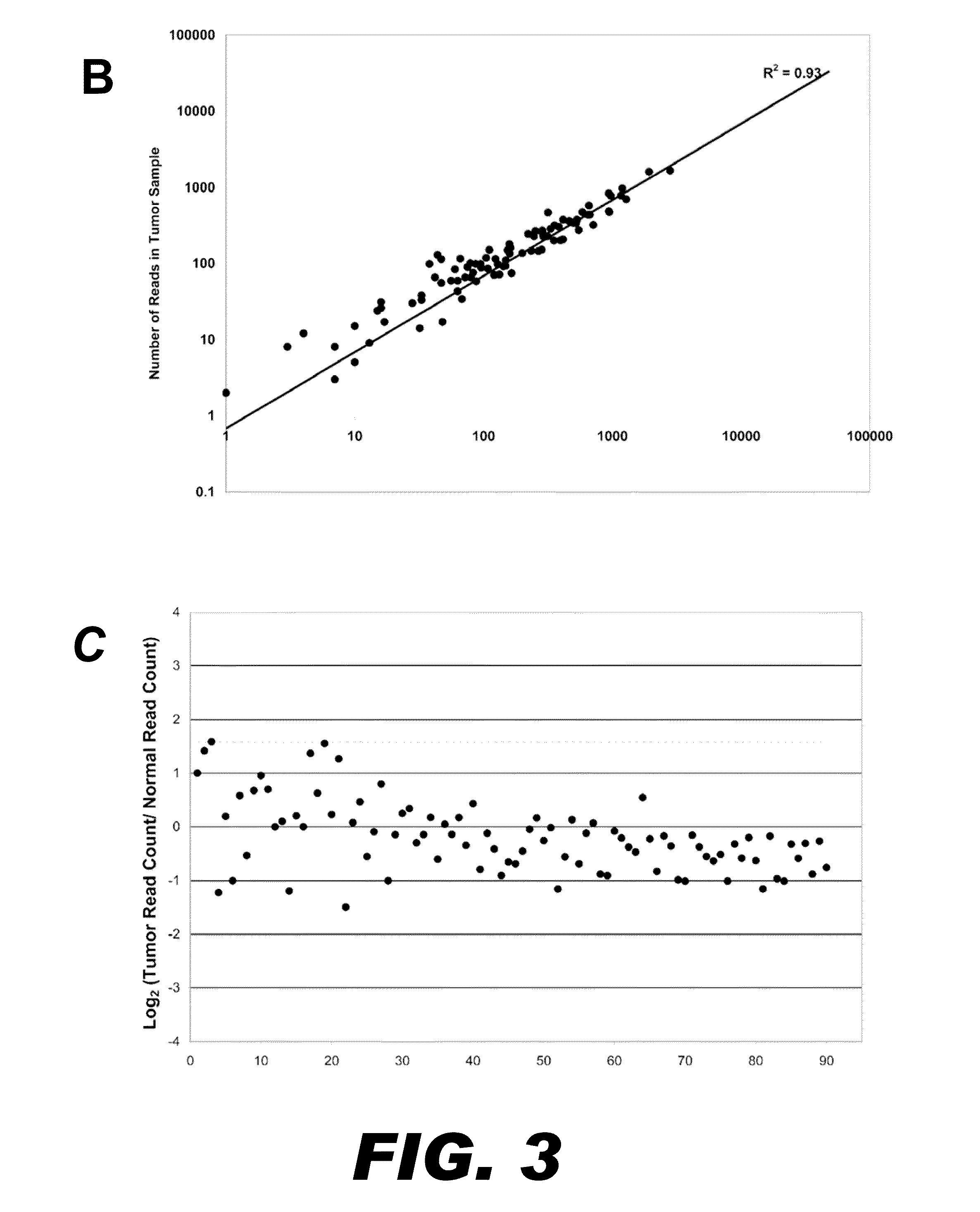Method for multiplexed nucleic acid patch polymerase chain reaction
a polymerase chain reaction and nucleic acid patch technology, applied in biochemistry apparatus and processes, organic chemistry, fermentation, etc., can solve the problems of loss of flexibility, rapid decline in sequencing cost, and inability to sequence a large number of human genome subsets
- Summary
- Abstract
- Description
- Claims
- Application Information
AI Technical Summary
Benefits of technology
Problems solved by technology
Method used
Image
Examples
example 1
Nucleic Acid Patch PCR Design
[0082]Mispriming events plague standard multiplex PCR reactions as the number of primer pairs increases. Nucleic acid patch PCR was designed to significantly decrease mispriming events, as nucleic acid patch PCR requires four oligonucleotide hybridizations per locus. This results in a more specific amplification than standard multiplex PCR, which requires only two hybridizations per locus. FIG. 1 presents a schematic of the concept of nucleic acid patch PCR.
[0083]In the first round of oligonucleotide hybridization, a PCR reaction containing DNA primer pairs for all targets is performed on genomic DNA (FIG. 1A). These DNA primers contain uracil substituted for thymine to facilitate the next step of the process. The PCR is performed for a low number of cycles and serves to define the ends of the target regions. To prepare for the second round of oligonucleotide hybridization, the PCR product generated above is first trimmed to produce a nucleic acid fragme...
example 2
Nucleic Acid Patch PCR and Sequencing of Candidate Genes in Colon Cancer
[0086]To demonstrate the multiplexed selection and amplification of exons by nucleic acid patch PCR described in Example 1, single nucleotide polymorphisms (SNPs) and mutations were analyzed in six nucleotide sequences encoding cancer related proteins: tumor protein p53 (TP53); adenomatous polyposis coli (APC); mutL homolog 1, colon cancer, nonpolyposis type 2 (MLH1); retinoblastoma 1 (RB1); breast cancer 1, early onset protein (BRCA1); and von Hippel-Lindau tumor suppressor protein (VHL) (Marsh and Zori 2002). These targets are located across 4 chromosomes, vary in length from 74 bp to 438 bp, and total 21.6 kbp. Oligonucleotide design, conditions of PCR reactions, sequencing and sequence analysis are described below.
Oligonucleotide Design
[0087]Human exon sequence plus 150 bp flanking sequence from the March 2006 assembly was downloaded from the UCSC Genome Browser (www.genome.ucsc.edu). The reference sequences...
example 3
Uniformity of Nucleic Acid Patch PCR Per Exon in Each Sample
[0099]Ideally for any multiplexed PCR method, all targeted regions would be uniformly amplified within each reaction by all primer pairs, and across samples from different templates. To analyze the uniformity of amplification of the 90 regions generated by nucleic acid patch PCR in Example 2, the number of reads obtained for each targeted was graphed (FIG. 3A). The number of sequencing reads obtained for each exon is also presented numerically in TABLE D. Sequence coverage ranged over 2-3 logs (base 10), with 75% (68 / 90) of exons having between 10 and 500 reads in both samples (50 fold abundance range). The median number of reads per exon was 145. Seventy-six percent of all exons fell within 5-fold coverage of this median (29-725 reads). There were no parameters found that explain the non-uniformity. Exon non-uniformity did not correlate with the gene, the size of the amplicon, nor the GC content of the oligonucleotides.
TAB...
PUM
| Property | Measurement | Unit |
|---|---|---|
| melting temperature | aaaaa | aaaaa |
| melting temperature | aaaaa | aaaaa |
| melting temperature | aaaaa | aaaaa |
Abstract
Description
Claims
Application Information
 Login to View More
Login to View More - R&D
- Intellectual Property
- Life Sciences
- Materials
- Tech Scout
- Unparalleled Data Quality
- Higher Quality Content
- 60% Fewer Hallucinations
Browse by: Latest US Patents, China's latest patents, Technical Efficacy Thesaurus, Application Domain, Technology Topic, Popular Technical Reports.
© 2025 PatSnap. All rights reserved.Legal|Privacy policy|Modern Slavery Act Transparency Statement|Sitemap|About US| Contact US: help@patsnap.com



